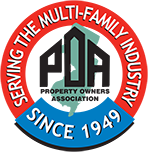By Shannon Sked, Western Pest Services
Property managers of multifamily communities across the country are always threatened by a variety of pest problems. One of the most significant (in terms of cost and difficulty to remediate) pest threats is bed bugs. Bed bugs rapidly resurged in the last decade; taking up residence in properties like apartments where there are people; especially properties with high turnover rates like hotels. In 2011, 99 percent of U.S. pest control companies reported encountering bed bug infestations, compared to 11 percent before2000. According to a 2010 analysis of the U.S. pest control industry, apartments were one of the three most treated properties for bed bugs. Bed bugs are small, wingless insects about the size of an apple seed. They are elusive, seeking blood meals from human hosts at night, and then disappearing into cracks and crevices, behind headboards and base boards or under couch cushions during the day. As a result, spotting the pest itself can be extremely difficult. The good news is bed bugs often leave behind other clues, such as ink-colored stains and cast skins on bed or in furniture, carpet or wall surfaces. Another due they leave behind is one that people can’t even see (or smell): unique odors that dogs can decipher to identify infestations. A bed bug infestation left untreated can become a serious problem as bedbugs multiply quickly. In the span of anew months, one bed bug can become couple hundred. What’s more, treating an infestation can be difficult with costly remediation processes. Finally, bed bugs can lead to litigation and negative word of mouth, ultimately lowering occupancy rates of properties and increasing legal costs. As a result, it’s important for property managers to understand their responsibility in preventing and managing infestations.
Characteristics of the Multifamily Environment Characteristics of the multifamily environment not only provide an ideal breeding ground for bed bugs, they also present unique challenges in pest detection and remediation.• Cleaning standards: Apartment residents are not required to regularly launder bed linens like healthcare and hospitality environments.• Outter: Large volumes of personal belongings in apartments provide bed bugs with a multitude of harborage areas.• Ooze quarters: Bed bugs can easily travel from room to room and to adjacent units between walls, through air ducts as well as across hallways.• Tenant transport: Tenants within building who are friendly often visit each other, and this behavior can accidentally transport the bedbugs from an infested unit to a non infested unit.• Used Furniture: Often, departing residents don’t want to bother with moving furniture and it’s left at the dumpster. Infested mattresses, couches and other furniture may then be collected by an incoming resident and brought into a unit, causing another infestation.
Understanding Your Role When it comes to treating an infestation, responsibilities of property managers and tenants are often unclear. To avoid confusion and protect your property against potential litigation, establish a bed bug policy that clearly states each party’s role regarding bed bug prevention, identification and treatment. It’s important to remember, however, that liability issues surrounding bedbug infestations are governed by state and sometimes local law. The responsibilities of property managers vary from state-to-state. Be sure to understand your state and local laws prior to developing your property’s bed bug policy. In addition to establishing a policy, implement the following best practices:• Work with your pest management provider to thoroughly inspect vacated apartments prior to leasing the units.• Substantiate your prevention efforts by keeping documentation of the move-in condition, updates to the pest management policy, and results of subsequent inspections.• Provide residents with tips on prevention and detection.• Develop a reporting protocol should bed bugs be suspected. This can be added as an addendum to the lease.
Detection and Treatment If a bed bug infestation is suspected, contact a pest management professional immediately. An experienced and licensed pest management professional can properly identify and treat an infestation. One of the most effective ways to identify bed bug problems the use of canine detection teams. A canine team consists of a trained handler and bed bug dog that has undergone extensive training Canine handlers are trained to manage canine behavior under real life working conditions within many different environments. The team should be certified, audited and have undergone rigorous training specific to bed bug scent detection. A recent University of Florida study established that canine inspections were 95-98 percent effective in identifying small numbers of bedbugs in isolated areas, provided they were trained in a high quality manner, which is more accurate than human inspections. Some of the other benefits of canine teams include:• A single room can be inspected in less time and with less disruption than any other available method.• Canine teams can detect small numbers of bed bugs, as well as their eggs and small nymphs, behind electrical sockets, walls, fixed headboards, in electrical appliances and buried deep in closets and furniture. If beg bugs are detected, selecting the appropriate treatment is essential. Work with your pest management professional to determine the best treatment technique. Bed bugs can be a challenge for property managers. While you c can’t prevent them from taking up residence on your property, you can arm yourself with knowledge and be prepared to handle an infestation should one occur. With proactive programs such as canine scent detection, you can also stay ahead of the infestation by finding small introductions before they explode. To help keep bed bugs from biting your community and lowering your occupancy rates, establish a cleared bug policy, keep an open line of communication with residents and work closely with a pest management professional to monitor for and treat bedbugs.
Shannon Sked is the Manager of Specialty Services and Entomologist with Western Pest Services. He can be reached at (973) 873-5567 or via their website at www.westernpest.com.
